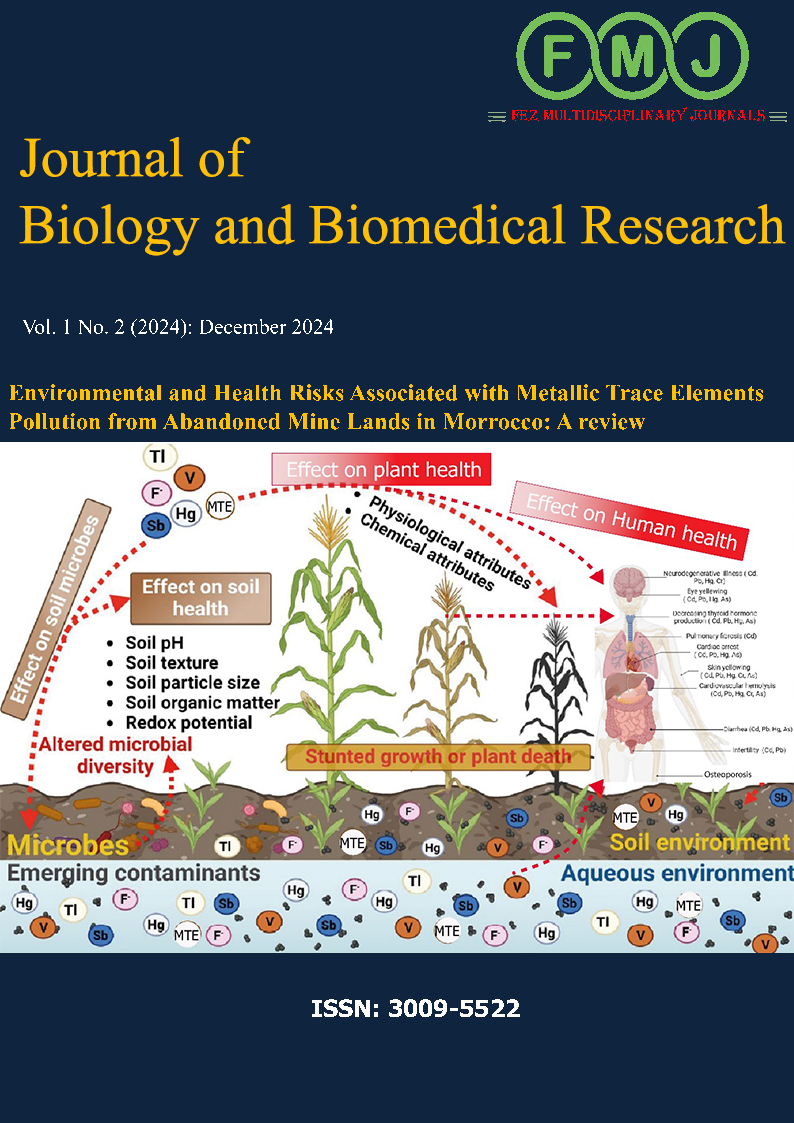Satureja calamintha essential oil: Chemical composition and assessing insecticidal efficacy through activity against acetylcholinesterase, chitin, juvenile hormone, and molting hormone.
DOI:
https://doi.org/10.69998/j2br.v1i2.8Keywords:
Biopesticides, Satureja calamintha, Toxicity, in vivo, in silico, biological parametersAbstract
Plant-derived insecticides based on essential oils (EOs) are currently considered as an excellent option to reduce the adverse effects associated with synthetic pesticides. In this study, we attempted to analyze the chemical composition, insecticidal properties, and inhibition of biological parameters, as well as to evaluate the mode of action of the bioactive components of Satureja calamintha EO about molecular targets in three life stages of the insect Callosobruchus maculatus. Gas chromatography-mass spectrometry (GC-MS) was used to investigate the phytochemical profile of the EO. Inhalation and contact tests with the insect Callosobruchus maculatus (C. maculatus) were carried out to evaluate the insecticidal activity, and in silico molecular docking techniques were used to assess the mode of action. The extraction of the EO yielded 1.72%, and chromatographic analysis identified 19 potentially active compounds, with pulegone (52.4%) and neo-dihydrocarveol (16.1%) as the predominant constituents. Toxicity tests conducted via contact and inhalation demonstrated significant insecticidal activity against C. maculatus after 24 hours of exposure, achieving 87% and 100% mortality, respectively. The LC50 values were determined to be 9.34 µL/L for contact toxicity and 4.43 µL/L for inhalation toxicity, while the LC95 values were 22.26 µL/L and 12.92 µL/L, respectively. Additionally, exposure to EO inhibited oviposition and emergence across all insect life stages tested. This dose-dependent inhibition reached complete suppression at a 20 µL/L concentration. In addition, exposure to EO showed inhibition of oviposition and emergence at all insect life stages tested. This inhibition increased with increasing dose, reaching complete inhibition at 20 μL/L.
Downloads
Downloads
Published
Issue
Section
License
Copyright (c) 2025 Mohamed Taibi, Sanae Rezouki, Tarik Moubchir, Youness El Abdali , Ibrahim Mssillou, Azeddin El Barnossi, Amine Elbouzidi, Mounir Haddou, Abdellah Baraich, Doha Berraaouan, Farah Mellouk, Meryem IDRISSI YAHYAOUI, Reda Bellaouchi, Ennouaamane Saalaoui, Amine khoulati, Abdeslam Asehraou, Mohamed Addi, Bouchra El Guerrouj, Khalid Chaabane (Author)

This work is licensed under a Creative Commons Attribution-NonCommercial-NoDerivatives 4.0 International License.





